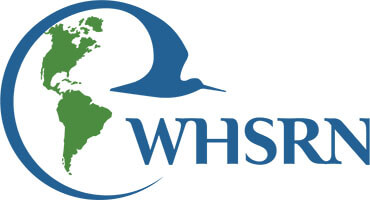About WHSRN
As some of nature’s most ambitious and amazing long-distance migrants, shorebirds are seemingly always on the move.
Traveling thousands of miles, their migration routes are timed perfectly with the availability of food resources. But ongoing threats have reduced the populations of many shorebird species to a fraction of what they were 30 years ago.
In the mid-1980s, scientists from around the Americas were already documenting serious population declines in shorebirds. Recognizing that these birds were in trouble prompted the scientific community to take action and develop the framework for a network of key sites to protect shorebirds and their habitats: the Western Hemisphere Shorebird Reserve Network (WHSRN). WHSRN is a science-based, partnership-driven, conservation initiative for protecting the ecological integrity of critical habitats for shorebirds throughout the Americas.
WHSRN Today
123
Sites in the Network
20
Countries Participating
450
Partners
39.1 million
Acres of Shorebird Habitat

Scope
WHSRN is focused on the conservation of all shorebird species and populations in the Americas for which a site-based approach is both appropriate and effective.
Mission
WHSRN’s mission is to conserve shorebirds and their habitats across the Americas through action at a network of key sites.
Vision
WHSRN seeks that the networks of sites that shorebirds need to thrive are managed for effective conservation, resulting in healthy shorebird populations and habitats that benefit current and future human generations.
Guiding Principles
- WHSRN site designation and conservation action are informed by the best available information, including traditional and local ecological knowledge.
- Site-based conservation is the centerpiece for accomplishing WHSRN’s mission within the larger ecological context of the full network of sites.
- WHSRN conservation actions and site management plan for and respond to climate change mitigation, adaptation and impact reduction.
- Traditional and cultural practices are recognized, valued and respected, and integrated within decisions regarding the management of sites.
- Collaboration with traditional and non-traditional stakeholders at local, national and international scales enhances WHSRN’s capacity to achieve its vision.
- Communication and voluntary partnerships are key to an effective network and achieving common conservation goals.
- Ecologically-functional shorebird habitats provide livelihoods and make a significant contribution to human wellbeing.
WHSRN works to:
- Build a strong international system of sites used by shorebirds throughout their migratory ranges.
- Develop science and management tools that expand the scope and pace of habitat conservation at each site within the Network.
- Establish local, regional and international recognition for sites, raising new public awareness and generating conservation funding opportunities.
- Serve as an international resource, convener and strategist for issues related to shorebird and habitat conservation.
Cover Photo: Mixed species flock feeds on horseshoe crab eggs. Photo: Maina Handmaker.
Page photos top to bottom: Brad Winn, Maina Handmaker.




